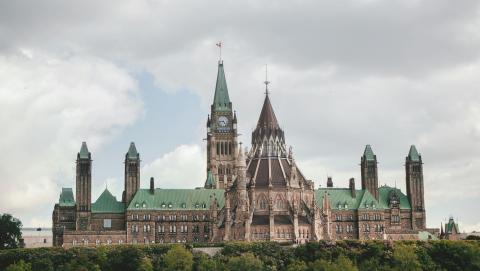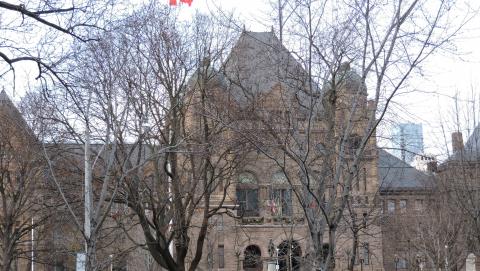
New Procurement Requirements, Bill 30 Advocacy, 2025 Federal Budget Infrastructure Investments
Top Insights
- Yesterday, the province announced it is introducing the Buy Ontario Act to require municipalities to prioritize Ontario and then Canadian vendors in procurements.
-
AMO submitted comments and a letter to the province opposing Bill 30’s proposal to exempt projects funded by the Skills Development Fund (SDF) Capital Stream from the Planning Act and some or all of the Municipal Act.
-
Passed by Parliament on Monday, the 2025 Federal Budget was initially heralded for significant infrastructure investments. However, analysis shows it repackages existing infrastructure funds with only some new spending.
Public Sector Procurement Legislation
The Ontario government announced it is introducing the Buy Ontario Act which, if passed, would require public sector entities including municipalities to prioritize Ontario and then Canadian made goods and services.
AMO continues to reaffirm to the province that municipalities want to do their part to support Ontario’s economy and mitigate the impacts of tariffs and trade disruptions. According to AMO’s survey of municipal procurement, municipalities spend over $22 billion annually on goods and services, and 98% of its non-construction procurement is already from Canadian vendors.
AMO will work with the province to ensure that municipal procurement can be effectively harnessed as a tool to support our economy, while ensuring that we can mitigate against significant cost escalation and ensure continuity for municipal service delivery. For example, AMO is working with provincial and municipal staff to help inform the design of the first procurement policy to add “Buy Ontario” restrictions to municipal fleet vehicle procurement.
Bill 30: AMO Urges Safeguarding of Critical Municipal Planning Processes and Authorities
AMO has submitted comments opposing proposals in Bill 30, Working For Workers Seven Act, which seek to exempt projects funded through the Skills Development Fund’s (SDF) Capital Stream from the Planning Act and the Municipal Act.
While AMO supports streamlining planning, the legislative amendments proposed in Bill 30 are problematic given they extend broad planning exemptions to private sector organizations, which lack the robust regulatory and accountability frameworks that mitigated risks in previous planning exemptions (e.g., hospitals, schools). AMO is concerned that the SDF’s eligibility criteria alone is insufficient to support exempting recipients from the Planning Act and the Municipal Act. The proposed legislative changes pose significant risks to orderly and sustainable municipal growth, infrastructure planning, and site and community safety.
In its letter to Ministers Piccini and Minister Flack, AMO urges the Province to reconsider and remove these proposed exemptions from Bill 30 and reiterated its commitment to work with the government to develop solutions that meet provincial objectives while upholding the ability of municipalities to maintain healthy, sustainable communities.
2025 Federal Budget Infrastructure Investments Announcements
Infrastructure
The 2025 Federal Budget announced an investment of $115 billion over 5 years for new public, municipal, indigenous and trade infrastructure. AMO appreciates the federal acknowledgement of the importance of local infrastructure, but the 2025 Federal Budget does not adequately provide sustainable, predictable and long-term funding streams required by municipalities. Instead, the existing infrastructure funding is mostly repackaged under new titles and frameworks.
For example, the new Build Communities Strong Fund (BCSF) was announced, providing $51 billion over 10 years, starting in 2026-27, with a further $3 billion per year ongoing funding for provincial and territorial governments. Funding for this program consists of limited new dollars and reallocated resources from the Canada Housing Infrastructure Fund, Canada Public Transit Fund, and the Canada Community Building Fund (CCBF). The BCSF will consist of three streams:
-
A Provincial and Territorial Stream, providing $17.2 billion over 10 years, beginning next year, to be shared between housing-enabling infrastructure, health-related infrastructure and infrastructure at colleges and universities. This is conditional funding geared towards municipalities that substantially reduce development charges and do not impose new levies that can negatively impact housing supply.
-
A Direct Delivery Stream, providing $6 billion over 10 years, to support large regional projects.
-
A Community Stream providing $27.8 billion over 10 years, which is a rebranding of the CCBF and contains no new additional funding.
For municipalities, this results in greater uncertainty, administrative complexity and competition for accessing federal funding as the funding envelope is distributed across multiple streams.
Housing
The initial investment of $13 billion over five years, starting in 2025-26, for Build Canada Homes is a welcome investment, which aims to increase housing supply. Within this investment, Build Canada Homes has $1 billion investment in supportive and transitional housing, necessary to make progress against increasing homelessness. However, there is no mention of the campaign promise to build 500,000 homes a year.
Even with increased funding in the next few years few years, overall spending on housing will decrease from the current year’s allocation of $3.53 billion to $3.36 billion by 2029. The future of the National Housing Strategy beyond its expiry in 2028 is unclear as are the investments in the Housing Accelerator Fund (which has no funding beyond 2027-28) and the Reaching Home program for critically needed homelessness prevention.



